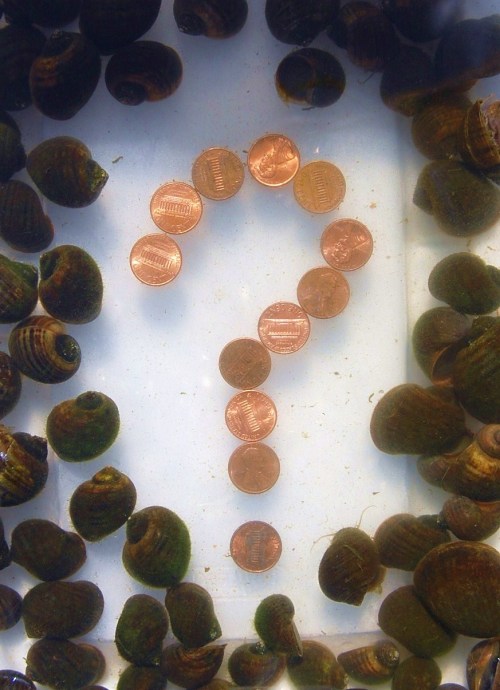
If one word could characterize Drew Leslie’s long, exemplary, and largely unheralded career in biology with the State of Florida, it would be “objectivity.” He is a precise, well-documented, unemotional thinker. That’s why, when he has a scientific opinion, it’s best to listen carefully. Drew doesn’t like the use of copper in the aquatic environment.
I remember the day in 1988, when he started down that path of reasoning. As Department of Natural Resources’ research biologists, Drew and I were conducting a herbicide study in the Basin of the St. Marks River, using various rates of chelated copper (4-10 gal Komeen/acre) in test plots on exotic Brazilian Elodea (Egeria densa), when up came hundreds of native apple snails (Pomacea paludosa) and other native snails, as well. In Florida, non-target damage to native plants related to a herbicide treatment was, and is, considered a mistake, but killing non-target animals is more like a serious blunder.
Drew was alarmed considering that copper was one of the most commonly used aquatic herbicides in the U.S. He began an extensive literature search on the impact of copper on aquatic organisms, leading to two watershed documents, “Aquatic Use of Copper-Based Herbicides in Florida” (Leslie, 1990) and “Copper Herbicide Use-Patterns in Florida Waters” (Leslie, 1992). In his reports, Drew made persuasive arguments that “copper is the most toxic herbicide to non-target organisms labeled for use in Florida waters” and that copper “treatments performed repeatedly . . . can potentially add significant quantities of copper to the sediments.” Subsequently, the annual use of copper in the State funded program has dropped 99.6% from 31,612 lbs (A.I.)/ year (1985-1987) to 138 lbs/ year (2007).
Of course, the wisdom of restricting the aquatic use of copper is much less clear now that invasive snails threaten the ecology of Florida’s waterways. The good news is that copper can kill Pomacea insularum, is relatively inexpensive, safe to humans, and labeled for aquatic use by the EPA (though only one product by Chem One is labeled specifically for snails). The bad news is that repeated use of copper will change an aquatic ecosystem to something more akin to a swimming pool in terms of zooplankton and benthic organisms. Is there some rational, middle ground where copper is used to initially knock down the invasive, snail population to the point that the remainder can be effectively trapped?
Bruce Jaggers (FWCC) and the folks at St. Johns River Water Management District have been heroically battling the Island Apple Snail in Newnans Lake (7427 acres), south of Gainesville, Florida. This FWCC Fish Management Area is part of the Orange Creek Basin, which includes Paynes Praire State Park, Orange and Lochloosa lakes, the Lower Ocklawaha River, and the Lower St. Johns River. Under the guidance of Dr. Bill Haller (IFAS), multiple, copper sulfate treatments reduced egg production from 100-200 clusters/month in the small, infested area to “a dozen or so” per month last year. That’s not eradication, though.
In a recent email, Bruce writes, “FWCC has informed me that we will not be participating in copper treatments anymore, citing a previous agreement with DEP to not use copper for aquatic plant control. We used 2 tons of copper in our last treatment at Newnans Lake, and I think that made Tallahassee feel quite uncomfortable, particularly with no guarantees.” That position is certainly understandable, but Pomacea insularum still threatens the entire Orange Creek Basin.
In response to Bruce’s email, I offered to give him some of our apple snail traps and bait to try in Newnans Lake, writing, “I would love it if you would try a few of our traps where you last observed egg masses. You may have a very small population that is vulnerable to trapping after aestivation but prior to egg laying.” In return, I asked for a thorough, scientific evaluation of the traps with recommendations for improvements. I hope he accepts! Posted by Jess Van Dyke
Aquatic Use of Copper-Based Herbicides in Florida (Leslie, 1990): http://www.myfwc.com/nonnatives/InvasivePlants/docs/copper.pdf
Copper Herbicide Use-Patterns in Florida Waters (Leslie, 1992):
http://dep.state.fl.us/lands/invaspec/2ndlevpgs/pdfs/cuconfnc.pdf
0 Responses to “The Copper Question”